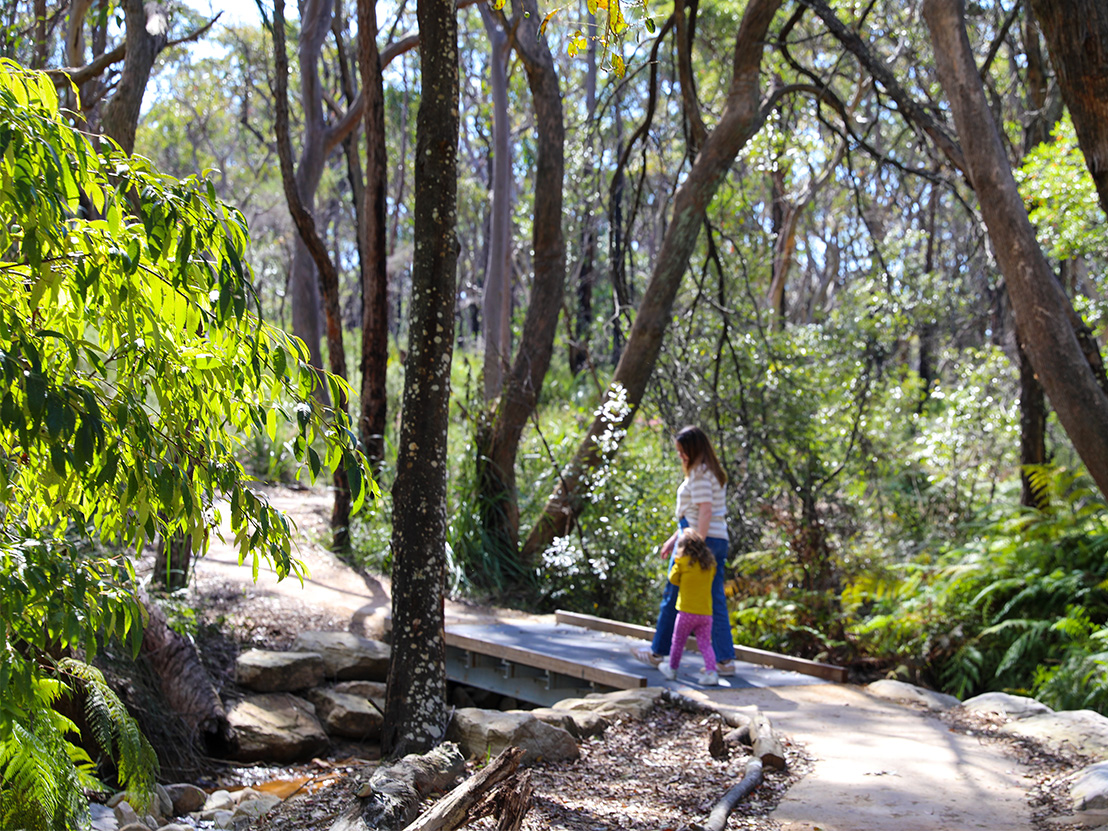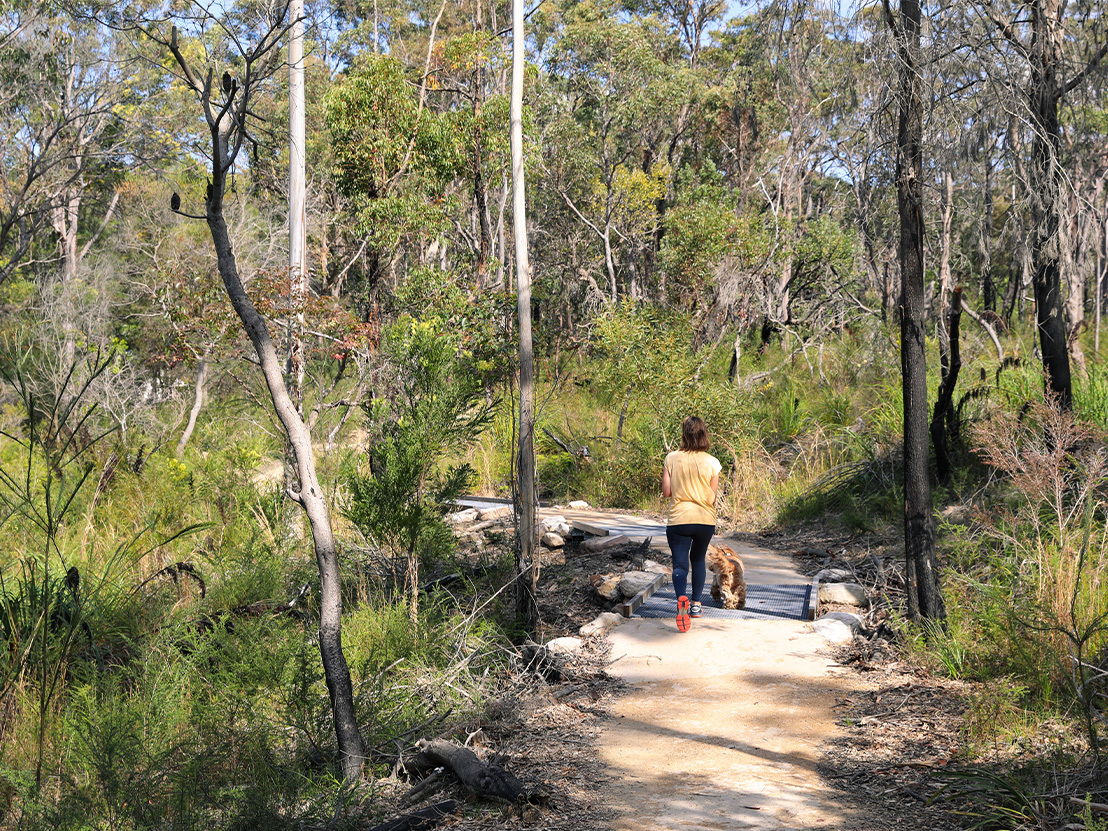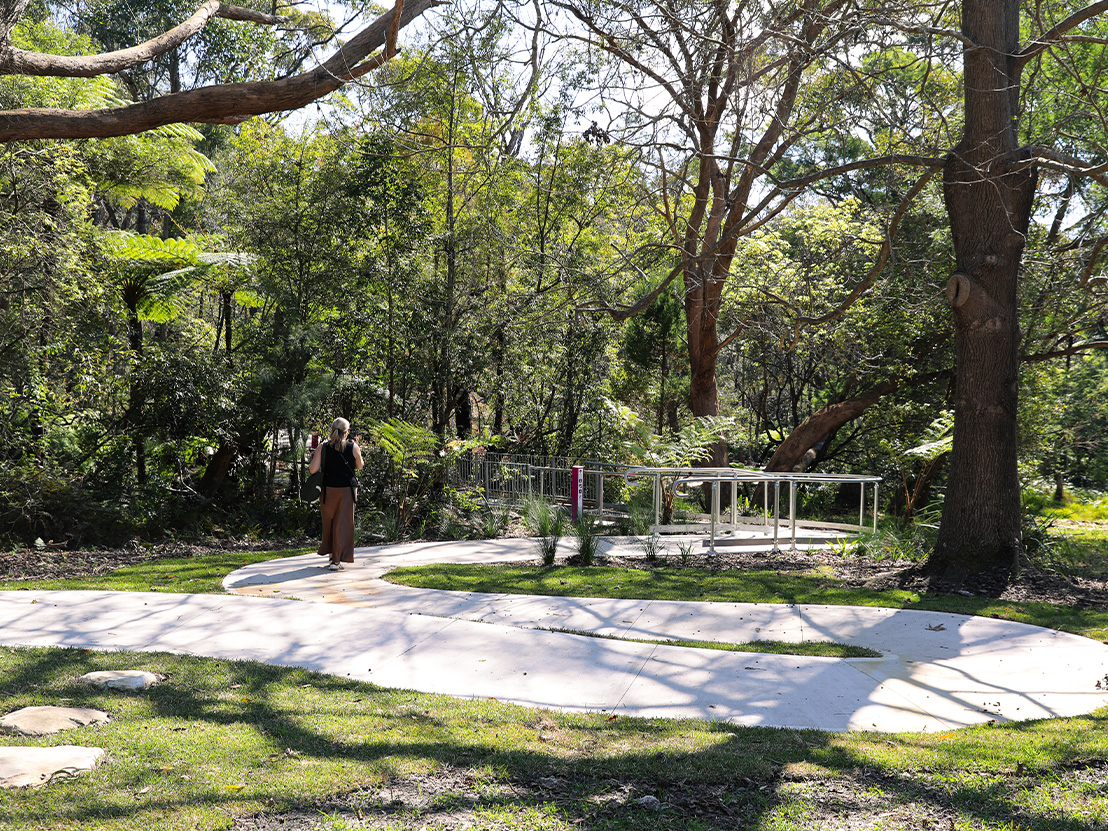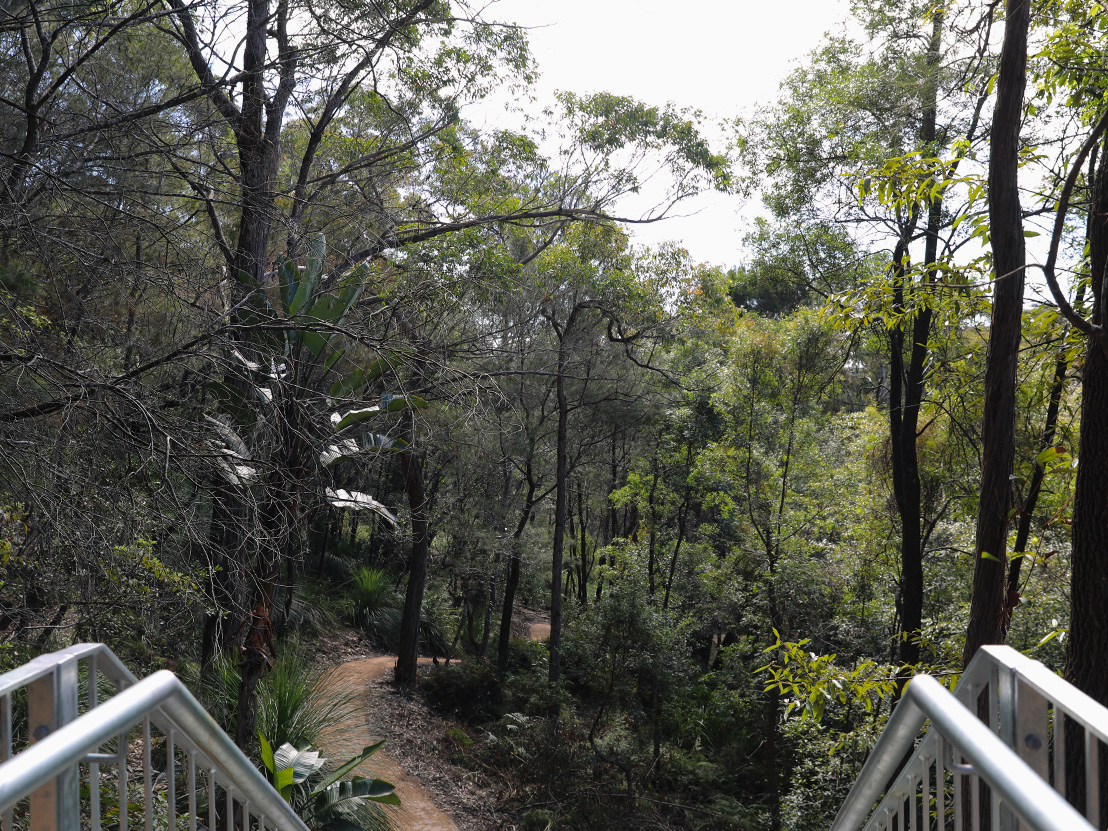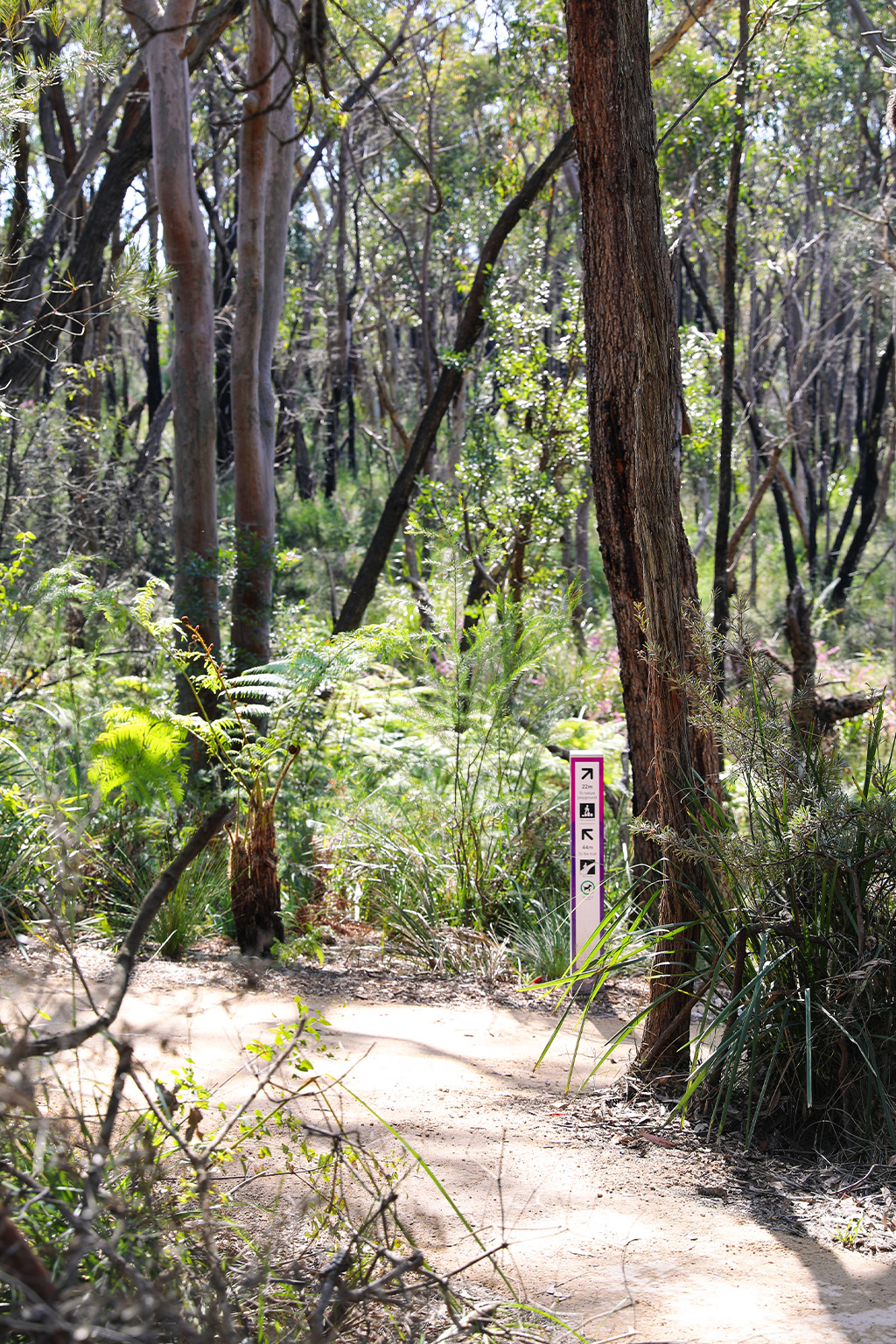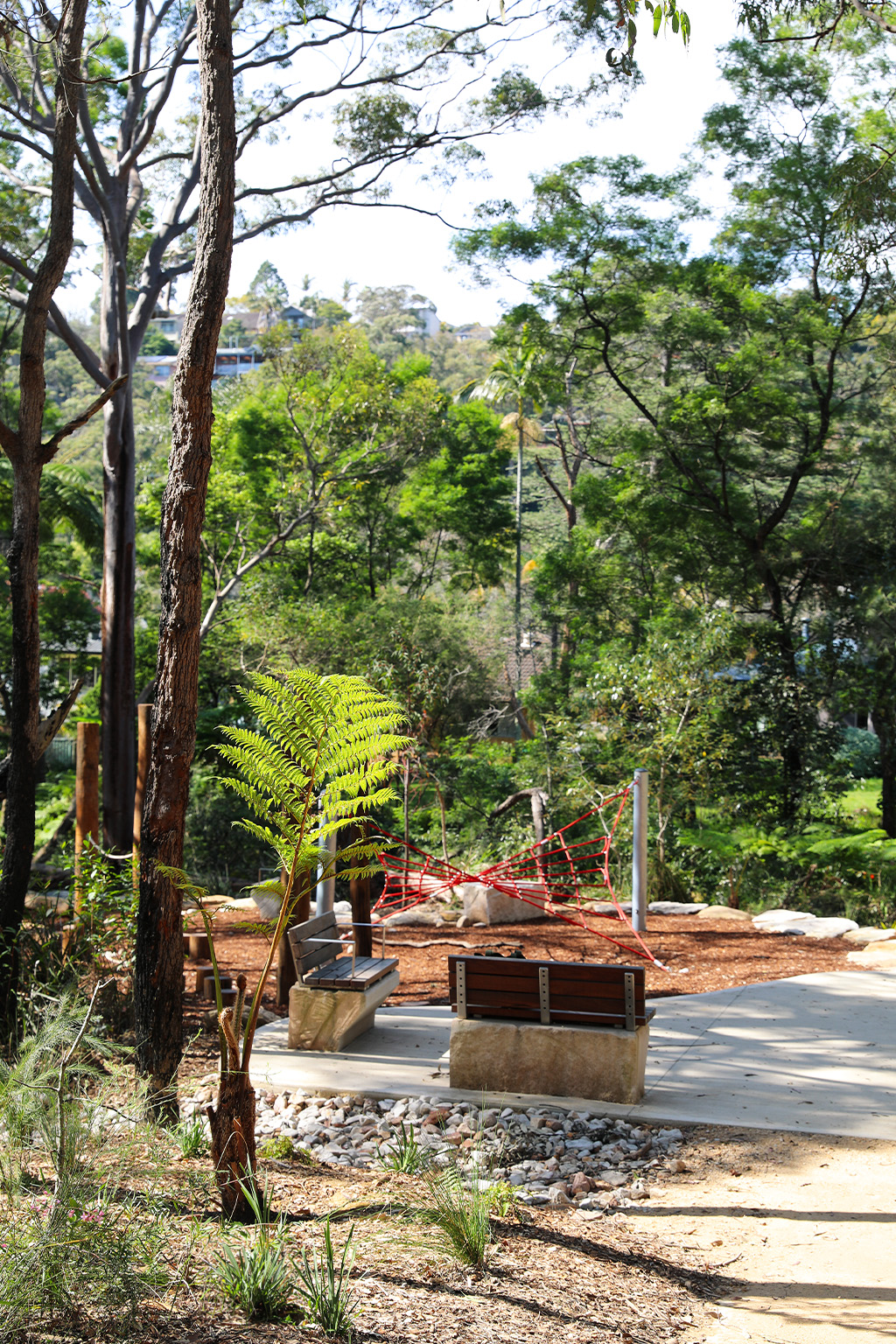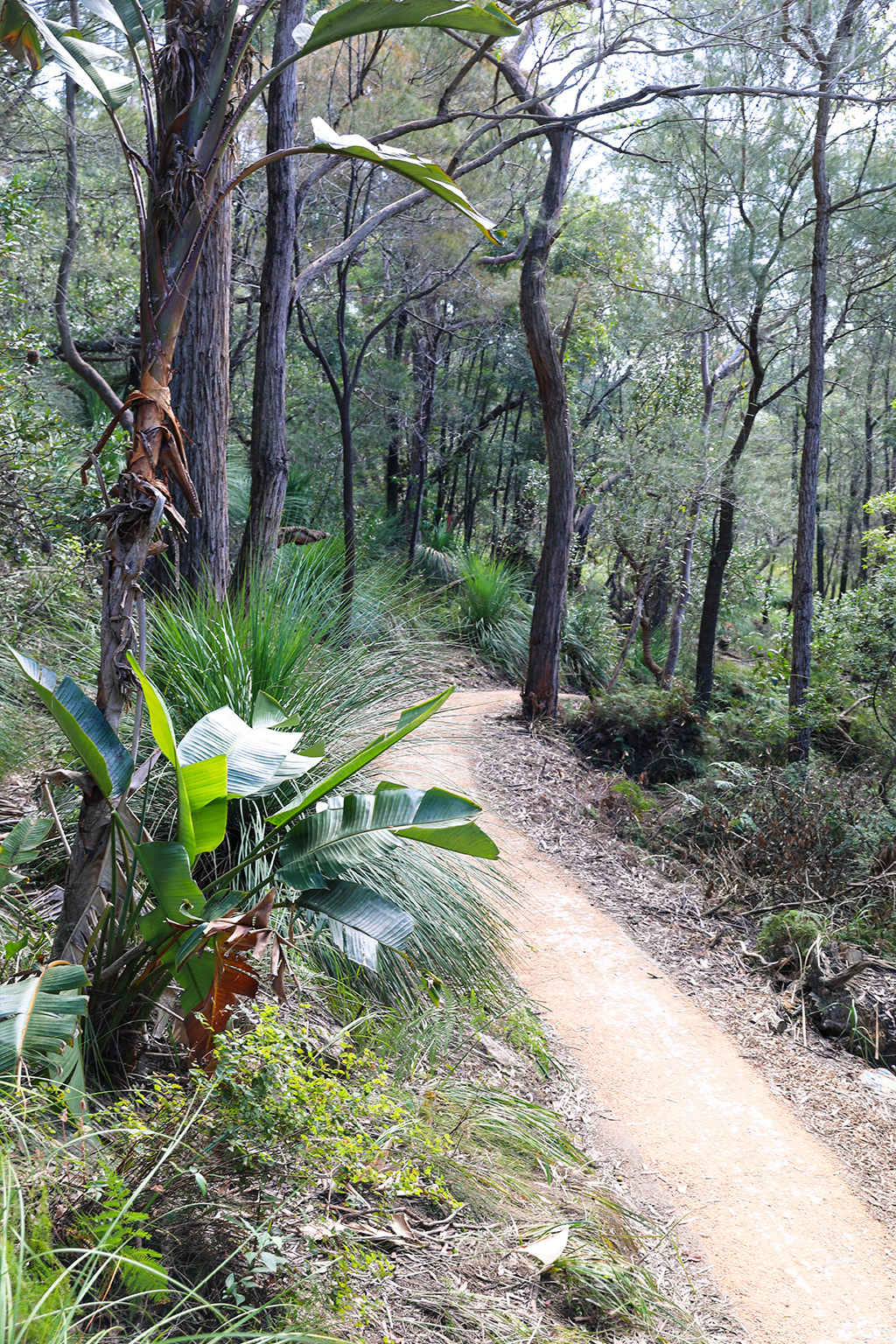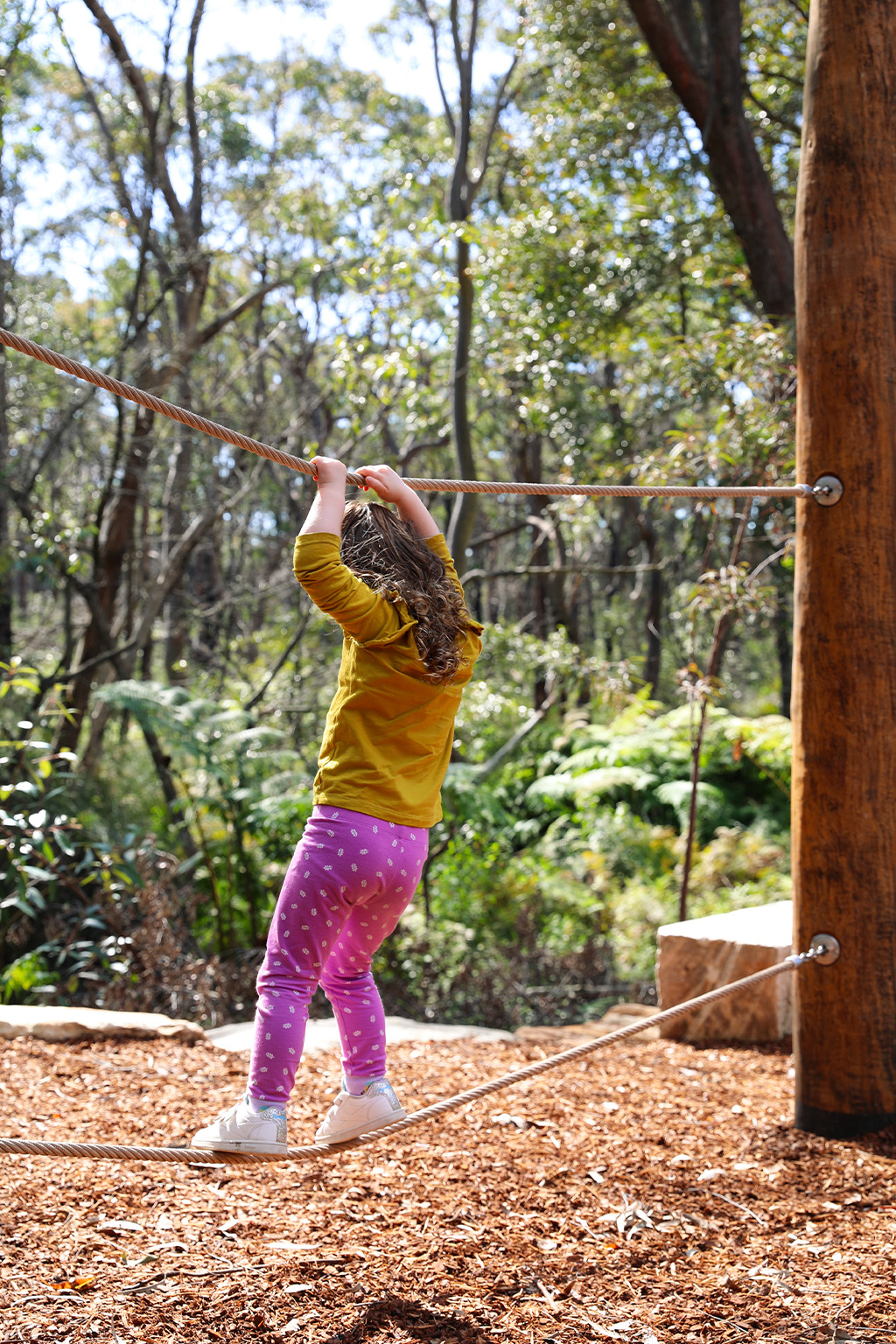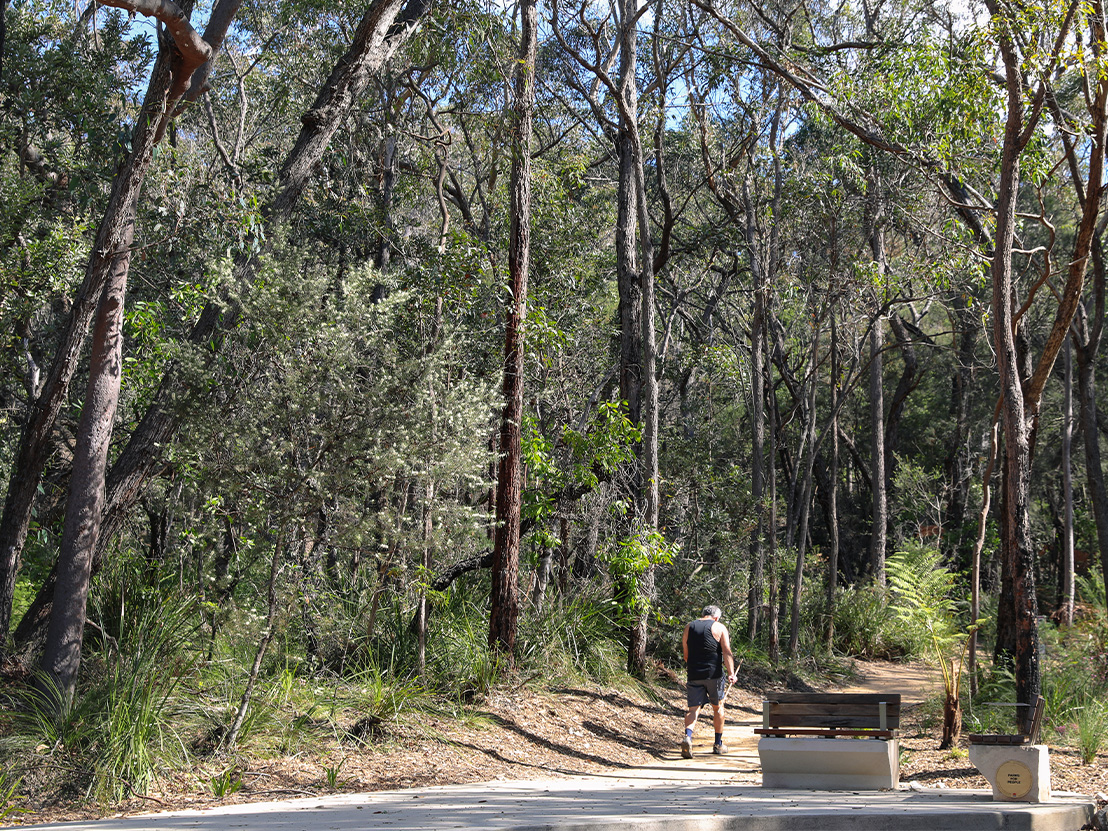Arcadia was the lead consultant for the creation and delivery of Nandi Reserve, a bushland park next to the Wakehurst Parkway. Nandi Reserve, a 12-hectare bushland site in Sydney’s Northern Beaches, has been revitalised under the NSW Government’s Parks for People program as a legacy space with the potential to use innovative design to deliver a park for future generations to enjoy. Shaped by community feedback, the upgrades introduced new pathways and opportunities to enhance connection through nature. These include walking trails, creek crossings, and nature play spaces, along with areas to sit and rest, all delivered with minimal impact on the natural environment’s ecology.
Arcadia embraced the natural qualities of the site, preserving and strengthening the habitat through regeneration and tree planting. Environmental protection measures were implemented while also increasing open space and recreational opportunities for the community. The project was carefully designed to minimise disturbance to the landscape, ensuring the preservation of its rich biodiversity. Extensive flora and fauna assessments guided the design to protect and enhance the ecological integrity of the endangered Duffy’s Forest Ecological Community.
Key environmental mitigation actions included:
/ Retention of significant native vegetation and bush re-vegetation.
/ Strategic pathway design to minimise ecological impact.
/ Comprehensive weed management and native planting initiatives.
A nature playground, featuring stepping logs, totem poles and a climbing net, is a much-loved addition for the local families and visitors. Its simplicity allows imaginative use by children of all ages.
The Department of Planning, Housing and Infrastructure, in partnership with Arcadia, worked closely with the community to ensure the project aligned with public expectations for nature preservation and improved accessibility. Over 1.2 kilometres of new walking paths were added, with clearer entry points enhancing connectivity between the reserve and nearby roads. This collaborative approach fosters a strong sense of local ownership and responsibility for the reserve’s ongoing care.
Nandi Reserve has set a benchmark for sustainable park design and risk mitigation, ensuring long-term environmental resilience through best-practice sustainability initiatives. The landscape design incorporates water-sensitive infrastructure, such as permeable gravel paths and mesh-panelled raised boardwalks, which allows surface water to be absorbed naturally. By retaining the existing topography, a natural drainage system was established, efficiently managing water flow. This approach reduces the risk of flooding and runoff pollution while supporting the health of deep soil root systems and maintaining the hydrological balance.
To ensure the enhancements integrate into the bushland landscape, sustainable and natural materials were used throughout the development. Recycled timber was used for boardwalks, and locally sourced sandstone was used for seating and decorative elements. These materials were selected to reduce waste and lower the environmental footprint of the project while blending harmoniously with the surroundings.
A biodiversity management plan ensures that the site’s ecological health is continually monitored. Regular assessments of vegetation regeneration, wildlife populations, and soil stability support the reserve’s long-term sustainability.
Nandi Reserve was designed and constructed in a way that had minimal impact on this ecologically sensitive site. With the body of the site in pristine condition, endemic planting has been used for shade and screening, with planting in zones to soften the transition between constructed and natural bushland, and to provide informal wayfinding through the new pathways.
Nandi Reserve is now used by locals for the new connections to the nearby Northern Beaches Hospital precinct, as a circulation path that allows for exercise and connection with nature.
